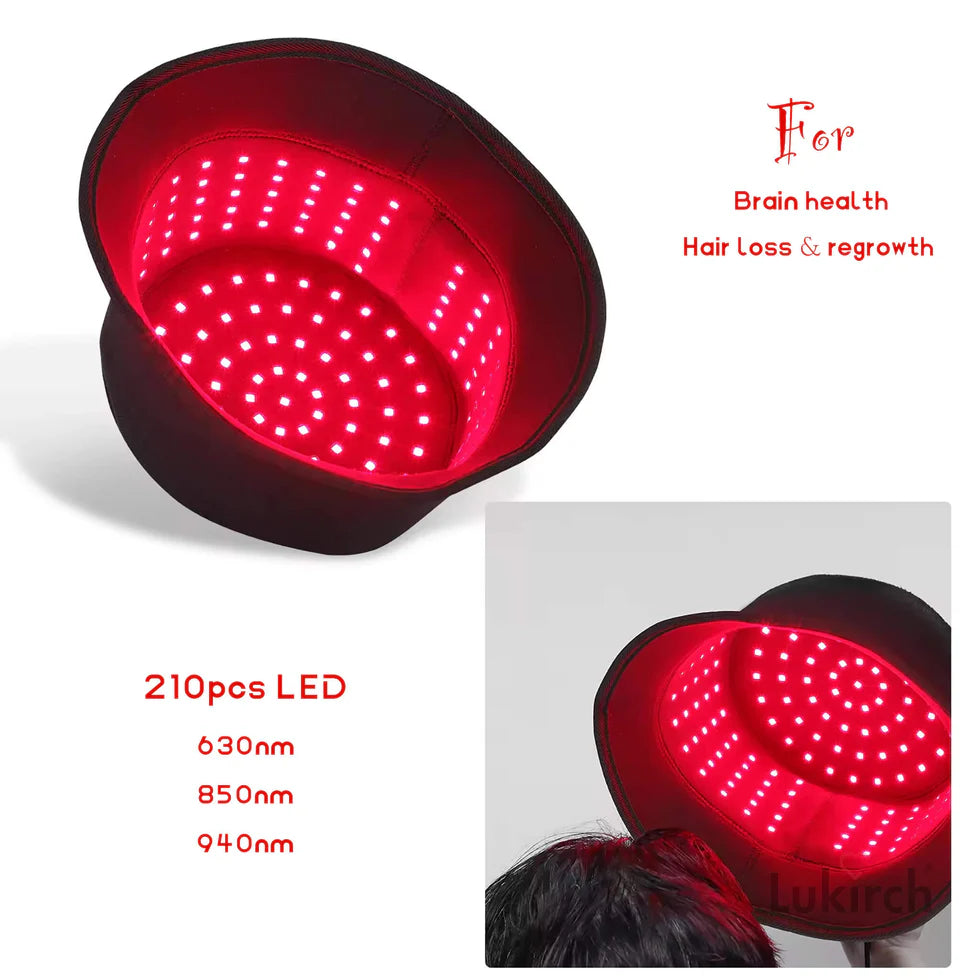Is red light therapy for hair loss effective? How and Why?
Posted by GEGARY

Yes, red light therapy (RLT) has been shown to be effective for treating hair loss, particularly in cases of androgenetic alopecia (pattern hair loss), which is the most common form of hair loss affecting both men and women. It works by using specific wavelengths of red and near-infrared light to stimulate hair follicles, encouraging hair growth and slowing down hair thinning.
How Red Light Therapy Works for Hair Loss
1. Stimulates Hair Follicle Cells
Red light therapy targets the mitochondria in hair follicle cells. The mitochondria are the powerhouse of the cells, and by absorbing red and near-infrared light, they produce more adenosine triphosphate (ATP), which provides energy for cellular functions. This increase in energy can stimulate the hair follicles, promoting cell regeneration and growth.
- Research: A clinical trial published in Lasers in Surgery and Medicine (2013) demonstrated that patients who used a red light therapy device for 24 weeks experienced significantly increased hair density and thickness compared to those using a placebo device. The therapy boosted ATP production in follicle cells, resulting in thicker and stronger hair.
2. Increases Blood Circulation to the Scalp
Red light therapy increases blood flow and improves the delivery of oxygen and essential nutrients to the scalp. This improved circulation nourishes hair follicles, promoting healthier hair growth and preventing follicles from entering the resting phase (telogen) prematurely.
- Research: A study published in Photomedicine and Laser Surgery (2014) found that red light therapy improved scalp blood flow, leading to increased hair growth in individuals with androgenetic alopecia. The enhanced circulation was a key factor in the stimulation of dormant hair follicles.
3. Reduces Inflammation in Hair Follicles
Inflammation around hair follicles can contribute to hair thinning and loss. Red light therapy has anti-inflammatory properties, which can help reduce chronic inflammation and allow hair follicles to function more effectively.
- Research: A study published in Lasers in Medical Science (2016) observed that red light therapy reduced inflammatory markers in the scalp, which could potentially reverse the miniaturization of hair follicles and promote the growth of thicker, healthier hair strands.
4. Extends the Anagen Phase (Growth Phase)
Hair growth occurs in cycles, and the anagen phase is the active growth phase of hair. Red light therapy has been shown to extend the duration of the anagen phase, allowing hair to grow for a longer period and improving hair density.
- Research: A study in The Journal of Cosmetic and Laser Therapy (2014) showed that patients who used red light therapy experienced an extension of the anagen phase, resulting in increased hair growth and reduced hair thinning over time.
Why Red Light Therapy is Effective for Hair Loss
-
Non-Invasive and Safe: Red light therapy is non-invasive and painless. It has minimal side effects compared to other hair loss treatments like medications (e.g., minoxidil or finasteride) or hair transplant surgery.
-
No Hormonal Interference: Unlike some pharmaceutical treatments that alter hormonal balance (such as finasteride), red light therapy works directly on the cellular level, making it a safer option for long-term use without affecting hormone levels.
-
Well-Suited for Both Genders: Red light therapy is equally effective for men and women with androgenetic alopecia. It targets hair follicle health without being dependent on gender-specific factors like hormone levels.
-
Complementary with Other Treatments: Red light therapy can be used in combination with other treatments for hair loss, such as topical medications, to enhance the overall outcome. For example, combining it with minoxidil or microneedling may amplify the benefits.
Supporting Research:
-
Clinical Efficacy: A double-blind, randomized controlled trial published in Lasers in Surgery and Medicine (2014) tested a red light therapy helmet for androgenetic alopecia. The participants using the helmet showed a 37% increase in hair count compared to the placebo group.
-
Long-Term Benefits: A 2017 study in Dermatologic Surgery showed that participants using red light therapy devices experienced sustained hair growth even after the study period ended, suggesting long-term benefits from continued use.
Conclusion:
Red light therapy is an effective, safe, and non-invasive option for promoting hair growth and treating hair loss. Its ability to stimulate hair follicles, enhance blood circulation, reduce inflammation, and extend the anagen phase makes it a promising solution for individuals experiencing thinning hair or androgenetic alopecia. While it may not completely cure hair loss, consistent use of red light therapy can lead to noticeable improvements in hair density and quality, backed by scientific research.

